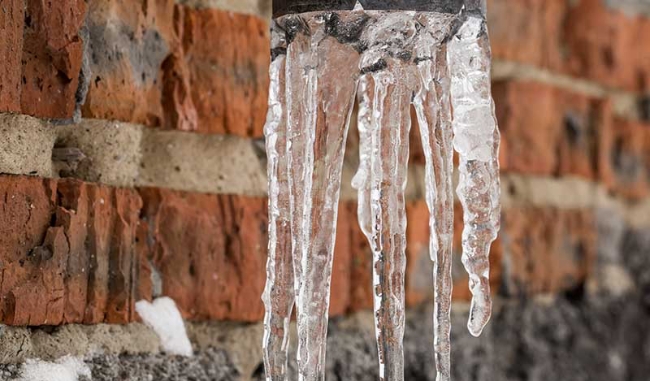Do you find yourself looking for guidance about How To Avoid Freezing Pipes?

Cold weather can wreak havoc on your pipes, specifically by freezing pipes. Here's exactly how to stop it from taking place and what to do if it does.
Intro
As temperature levels drop, the risk of icy pipes boosts, potentially causing expensive repair work and water damages. Understanding just how to prevent icy pipes is vital for homeowners in chilly environments.
Recognizing Frozen Pipes
What triggers pipelines to ice up?
Pipes ice up when revealed to temperature levels listed below 32 ° F (0 ° C) for extended periods. As water inside the pipes freezes, it expands, putting pressure on the pipe walls and potentially triggering them to burst.
Risks and damages
Frozen pipelines can bring about water supply disruptions, home damage, and expensive repair services. Burst pipelines can flood homes and trigger considerable structural damages.
Signs of Frozen Pipes
Recognizing icy pipelines early can stop them from breaking.
Just how to recognize icy pipelines
Seek lowered water circulation from faucets, unusual smells or noises from pipes, and visible frost on exposed pipelines.
Avoidance Tips
Protecting susceptible pipes
Cover pipelines in insulation sleeves or make use of warm tape to safeguard them from freezing temperatures. Concentrate on pipes in unheated or external locations of the home.
Heating strategies
Keep interior rooms appropriately heated, particularly areas with plumbing. Open up closet doors to allow warm air to circulate around pipes under sinks.
Safeguarding Outside Plumbing
Garden hose pipes and outside taps
Separate and drain garden hoses prior to winter. Mount frost-proof spigots or cover exterior taps with protected caps.
What to Do If Your Pipes Freeze
Immediate actions to take
If you presume frozen pipelines, maintain faucets open to ease pressure as the ice thaws. Utilize a hairdryer or towels soaked in warm water to thaw pipes slowly.
Long-Term Solutions
Structural modifications
Consider rerouting pipelines away from exterior wall surfaces or unheated areas. Include extra insulation to attics, basements, and crawl spaces.
Updating insulation
Invest in top notch insulation for pipes, attics, and wall surfaces. Correct insulation aids keep consistent temperatures and reduces the danger of icy pipelines.
Final thought
Stopping icy pipelines calls for positive procedures and quick reactions. By understanding the reasons, indications, and preventive measures, homeowners can shield their pipes during cold weather.
5 Ways to Prevent Frozen Pipes
Drain Outdoor Faucets and Disconnect Hoses
First, close the shut-off valve that controls the flow of water in the pipe to your outdoor faucet. Then, head outside to disconnect and drain your hose and open the outdoor faucet to allow the water to completely drain out of the line. Turn off the faucet when done. Finally, head back to the shut-off valve and drain the remaining water inside the pipe into a bucket or container. Additionally, if you have a home irrigation system, you should consider hiring an expert to clear the system of water each year.
Insulate Pipes
One of the best and most cost-effective methods for preventing frozen water pipes is to wrap your pipes with insulation. This is especially important for areas in your home that aren’t exposed to heat, such as an attic. We suggest using foam sleeves, which can typically be found at your local hardware store.
Keep Heat Running at 65
Your pipes are located inside your walls, and the temperature there is much colder than the rest of the house. To prevent your pipes from freezing, The Insurance Information Institute suggests that you keep your home heated to at least 65 degrees, even when traveling. You may want to invest in smart devices that can keep an eye on the temperature in your home while you’re away.
Leave Water Dripping
Moving water — even a small trickle — can prevent ice from forming inside your pipes. When freezing temps are imminent, start a drip of water from all faucets that serve exposed pipes. Leaving a few faucets running will also help relieve pressure inside the pipes and help prevent a rupture if the water inside freezes.
Open Cupboard Doors
Warm your kitchen and bathroom pipes by opening cupboards and vanities. You should also leave your interior doors ajar to help warm air circulate evenly throughout your home.

We are very fascinated with Helpful Tips to Prevent Frozen Pipes this Winter and I really hope you appreciated the entire entry. Enjoyed our post? Please share it. Let another person discover it. Many thanks for being here. Kindly pay a visit to our website back soon.
Go Deal